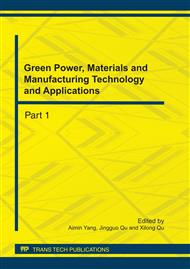p.58
p.64
p.69
p.74
p.81
p.86
p.91
p.96
p.101
Experimental Research of the Anodic Bonding in the Si-Glass-Si 3-Layer Structure
Abstract:
3-layer anodic bonding is one of the key technologies in the manufacture of complicated structure. The microcosmic process and current model of the 3-layer anodic bonding was investigated, and a new technology scheme with better bonding effect was developed. Using the experiment device, quantities of bonding current curves were obtained by the data collecting system. Under tensile testing device, intensity of the bonding was tested. By analysis of the data collected, the 3-layer bonding model was inspected, and the efficacy of the new technology scheme was proved.
Info:
Periodical:
Pages:
81-85
Citation:
Online since:
August 2011
Authors:
Keywords:
Price:
Сopyright:
© 2011 Trans Tech Publications Ltd. All Rights Reserved
Share:
Citation:


